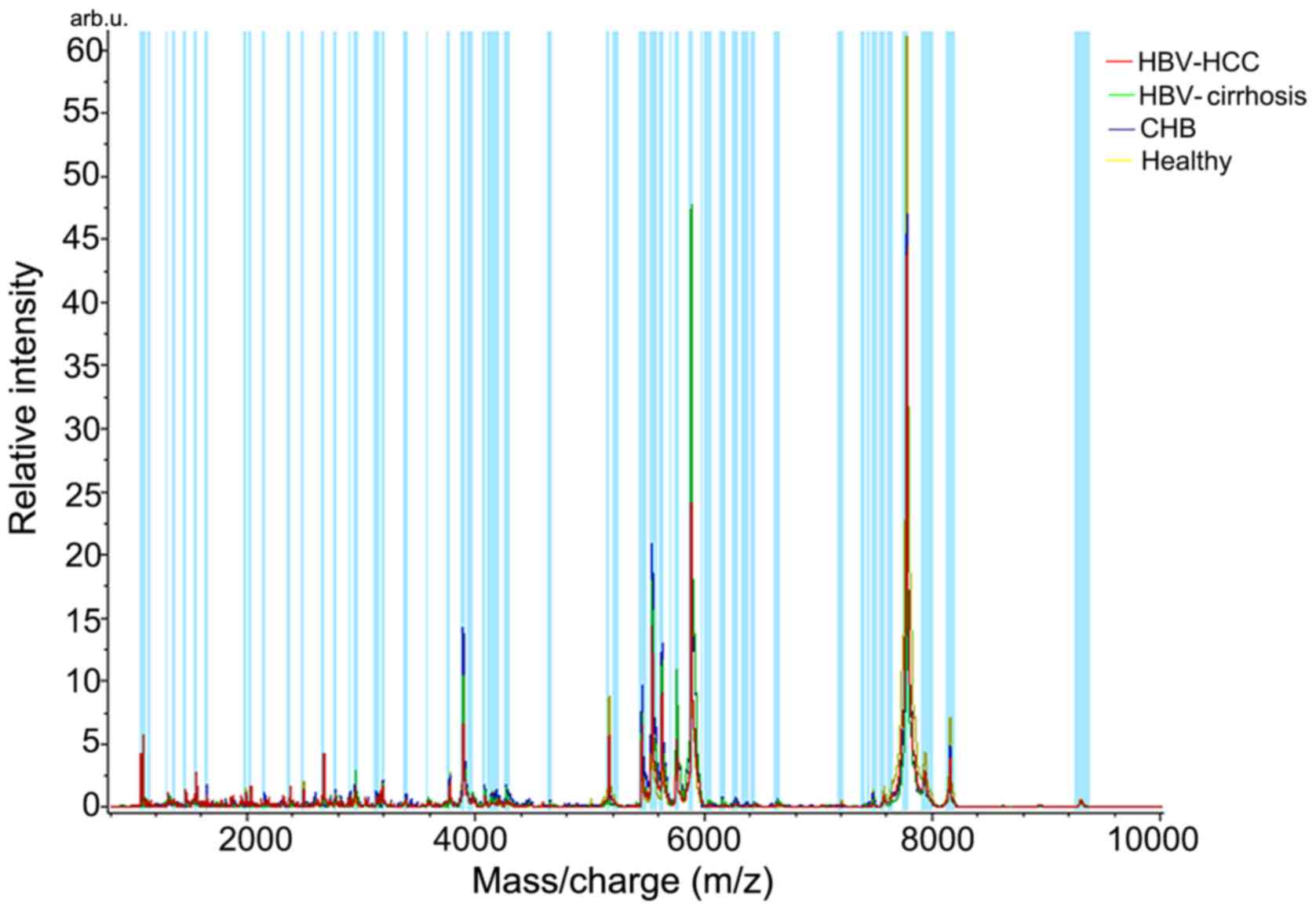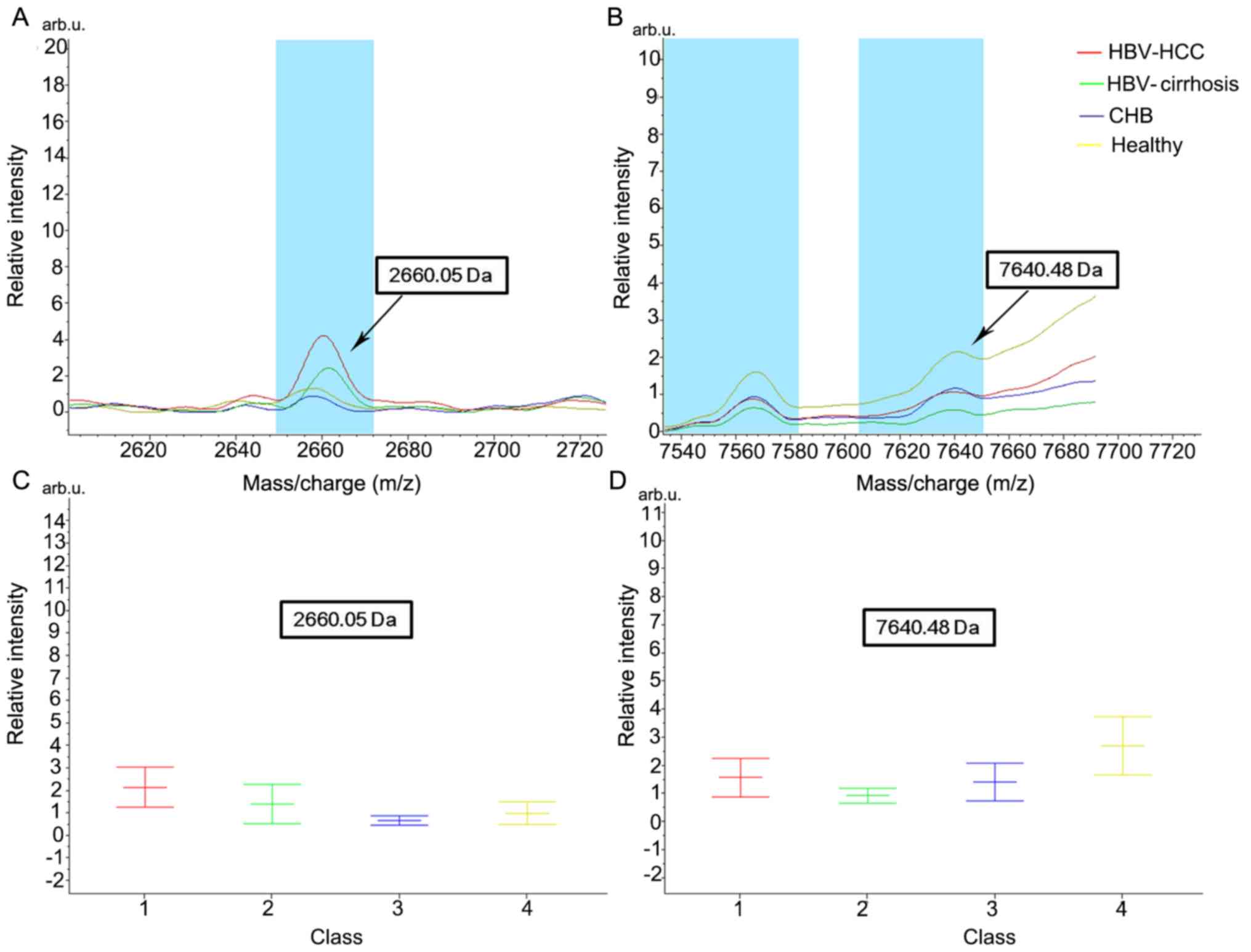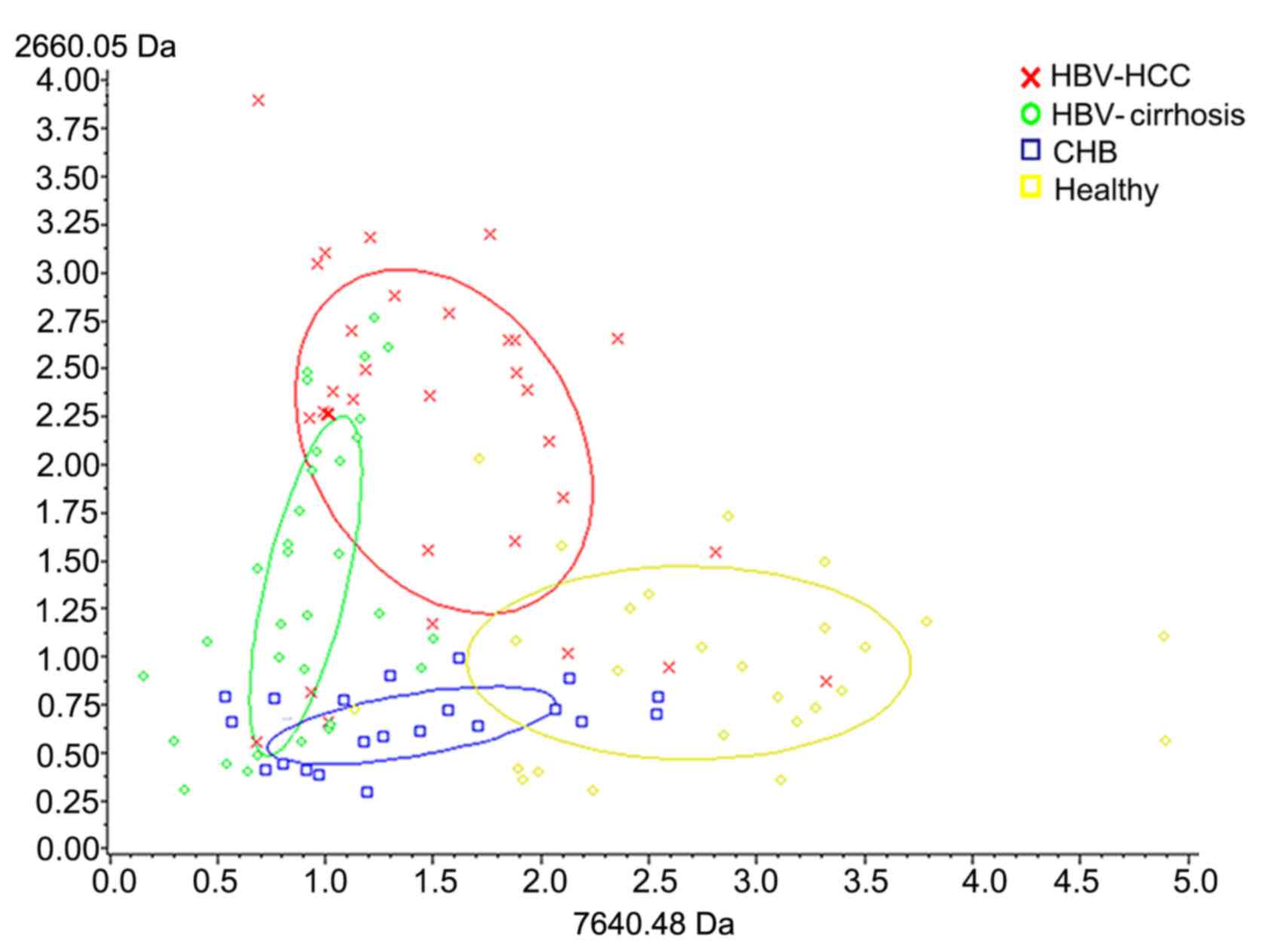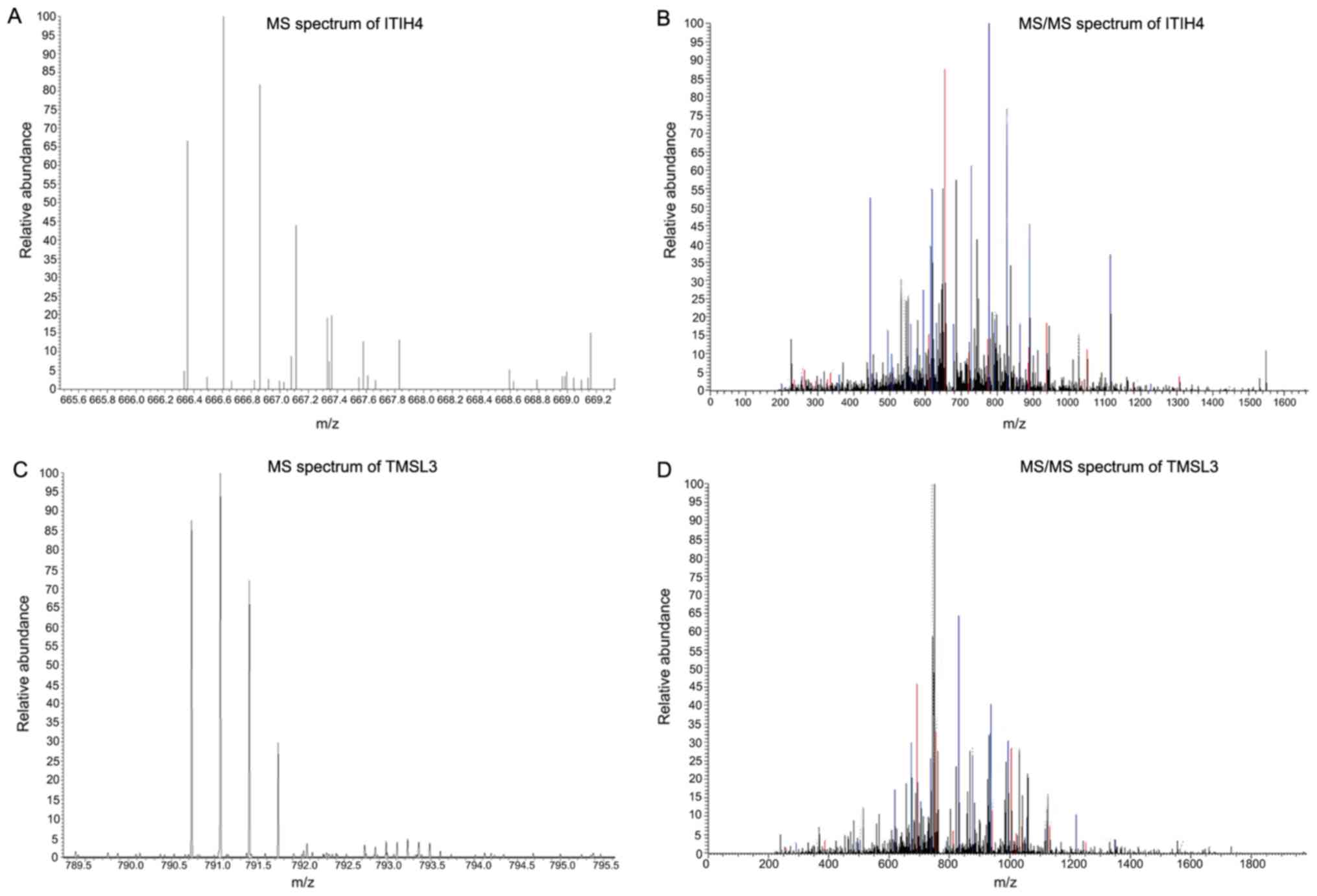|
1
|
Torre LA, Bray F, Siegel RL, Ferlay J,
Lortet-Tieulent J and Jemal A: Global cancer statistics, 2012. CA
Cancer J Clin. 65:87–108. 2015. View Article : Google Scholar : PubMed/NCBI
|
|
2
|
Marrero JA: Hepatocellular carcinoma. Curr
Opin Gastroenterol. 22:248–253. 2006. View Article : Google Scholar : PubMed/NCBI
|
|
3
|
El-Serag HB, Mason AC and Key C: Trends in
survival of patients with hepatocellular carcinoma between 1977 and
1996 in the United States. Hepatology. 33:62–65. 2001. View Article : Google Scholar : PubMed/NCBI
|
|
4
|
Hoofnagle JH and di Bisceglie AM: The
treatment of chronic viral hepatitis. N Engl J Med. 336:347–356.
1997. View Article : Google Scholar : PubMed/NCBI
|
|
5
|
Di Bisceglie AM and Hoofnagle JH:
Elevations in serum alpha-fetoprotein levels in patients with
chronic hepatitis B. Cancer. 64:2117–2120. 1989. View Article : Google Scholar : PubMed/NCBI
|
|
6
|
Sherman M, Peltekian KM and Lee C:
Screening for hepatocellular carcinoma in chronic carriers of
hepatitis B virus: Incidence and prevalence of hepatocellular
carcinoma in a North American urban population. Hepatology.
22:432–438. 1995. View Article : Google Scholar : PubMed/NCBI
|
|
7
|
Buamah PK, Gibb I, Bates G and Ward AM:
Serum alpha fetoprotein heterogeneity as a means of differentiating
between primary hepatocellular carcinoma and hepatic secondaries.
Clin Chim Acta. 139:313–316. 1984. View Article : Google Scholar : PubMed/NCBI
|
|
8
|
Taketa K, Okada S, Win N, Hlaing NK and
Wind KM: Evaluation of tumor markers for the detection of
hepatocellular carcinoma in Yangon General Hospital, Myanmar. Acta
Med Okayama. 56:317–320. 2002.PubMed/NCBI
|
|
9
|
Mita Y, Aoyagi Y, Suda T and Asakura H:
Plasma fucosyltransferase activity in patients with hepatocellular
carcinoma, with special reference to correlation with fucosylated
species of alpha-fetoprotein. J Hepatol. 32:946–954. 2000.
View Article : Google Scholar : PubMed/NCBI
|
|
10
|
Mehta A and Block TM: Fucosylated
glycoproteins as markers of liver disease. Dis Markers. 25:259–265.
2008. View Article : Google Scholar : PubMed/NCBI
|
|
11
|
Comunale MA, Lowman M, Long RE, Krakover
J, Philip R, Seeholzer S, Evans AA, Hann HW, Block TM and Mehta AS:
Proteomic analysis of serum associated fucosylated glycoproteins in
the development of primary hepatocellular carcinoma. J Proteome
Res. 5:308–315. 2006. View Article : Google Scholar : PubMed/NCBI
|
|
12
|
Jiang K, Shang S, Li W, Guo K, Qin X,
Zhang S and Liu Y: Multiple lectin assays for detecting
glyco-alteration of serum GP73 in liver diseases. Glycoconj J.
32:657–664. 2015. View Article : Google Scholar : PubMed/NCBI
|
|
13
|
Shang S, Li W, Qin X, Zhang S and Liu Y:
Aided diagnosis of hepatocellular carcinoma using serum fucosylated
haptoglobin ratios. J Cancer. 8:887–893. 2017. View Article : Google Scholar : PubMed/NCBI
|
|
14
|
Tanabe K, Kitagawa K, Kojima N and Iijima
S: Multifucosylated alpha-1-acid glycoprotein as a novel marker for
hepatocellular carcinoma. J Proteome Res. 15:2935–2944. 2016.
View Article : Google Scholar : PubMed/NCBI
|
|
15
|
Wang M, Shen J, Herrera H, Singal A,
Swindell C, Renquan L and Mehta A: Biomarker analysis of
fucosylated kininogen through depletion of lectin reactive
heterophilic antibodies in hepatocellular carcinoma. J Immunol
Methods. 462:59–64. 2018. View Article : Google Scholar : PubMed/NCBI
|
|
16
|
Liao J, Zhang R, Qian H, Cao L, Zhang Y,
Xu W, Li J, Wu M and Yin Z: Serum profiling based on fucosylated
glycoproteins for differentiating between chronic hepatitis B and
hepatocellular carcinoma. Biochem Biophys Res Commun. 420:308–314.
2012. View Article : Google Scholar : PubMed/NCBI
|
|
17
|
Marrero JA, Fontana RJ, Fu S, Conjeevaram
HS, Su GL and Lok AS: Alcohol, tobacco and obesity are synergistic
risk factors for hepatocellular carcinoma. J Hepatol. 42:218–224.
2005. View Article : Google Scholar : PubMed/NCBI
|
|
18
|
Bruix J, Sherman M, Llovet JM, Beaugrand
M, Lencioni R, Burroughs AK, Christensen E, Pagliaro L, Colombo M
and Rodés J; EASL Panel of Experts on HCC, : Clinical management of
hepatocellular carcinoma. Conclusions of the Barcelona-2000 EASL
conference. European Association for the Study of the Liver. J
Hepatol. 35:421–430. 2001. View Article : Google Scholar : PubMed/NCBI
|
|
19
|
Faria SC, Szklaruk J, Kaseb AO, Hassabo HM
and Elsayes KM: TNM/Okuda/Barcelona/UNOS/CLIP International
Multidisciplinary Classification of hepatocellular carcinoma:
Concepts, perspectives, and radiologic implications. Abdom Imaging.
39:1070–1087. 2014. View Article : Google Scholar : PubMed/NCBI
|
|
20
|
Cao J, Hu Y, Shen C, Yao J, Wei L, Yang F,
Nie A, Wang H, Shen H, Liu Y, et al: Nanozeolite-driven approach
for enrichment of secretory proteins in human hepatocellular
carcinoma cells. Proteomics. 9:4881–4888. 2009. View Article : Google Scholar : PubMed/NCBI
|
|
21
|
Sparbier K, Asperger A, Resemann A,
Kessler I, Koch S, Wenzel T, Stein G, Vorwerg L, Suckau D and
Kostrzewa M: Analysis of glycoproteins in human serum by means of
glycospecific magnetic bead separation and LC-MALDI-TOF/TOF
analysis with automated glycopeptide detection. J Biomol Tech.
18:252–258. 2007.PubMed/NCBI
|
|
22
|
Baggerly KA, Morris JS, Wang J, Gold D,
Xiao LC and Coombes KR: A comprehensive approach to the analysis of
matrix-assisted laser desorption/ionization-time of flight
proteomics spectra from serum samples. Proteomics. 3:1667–1672.
2003. View Article : Google Scholar : PubMed/NCBI
|


















